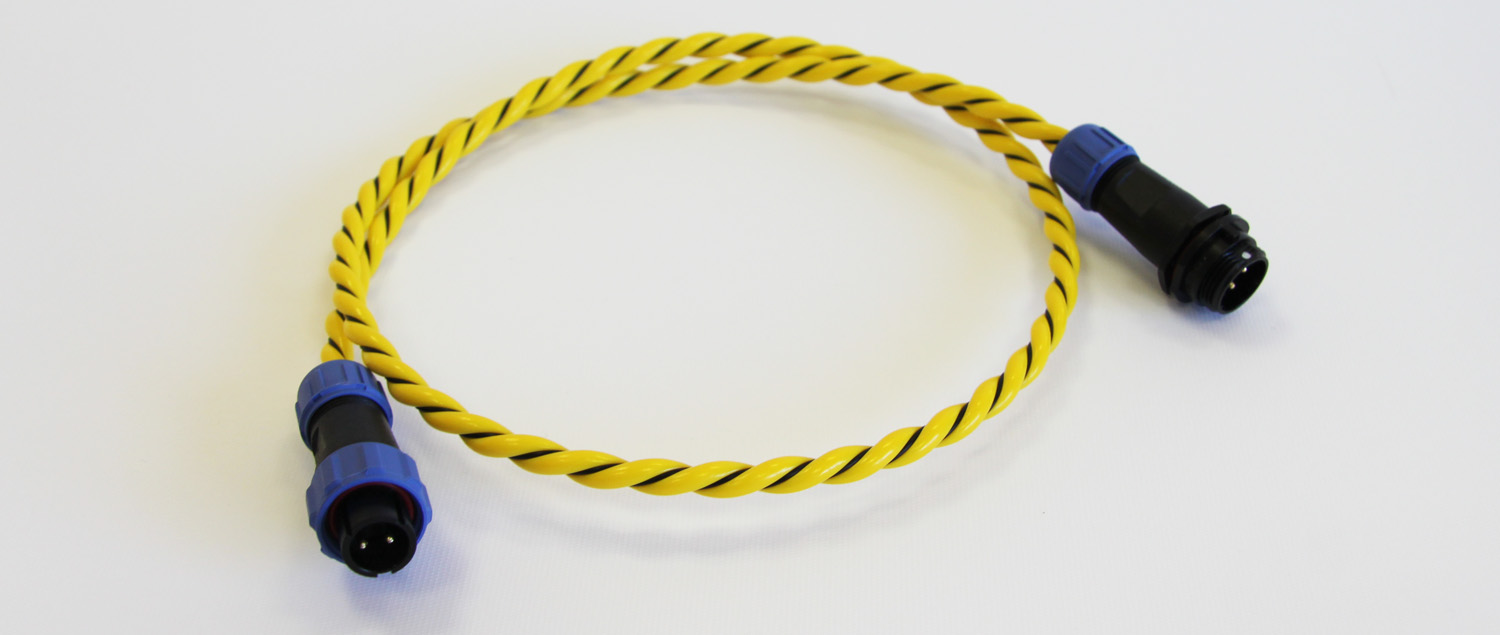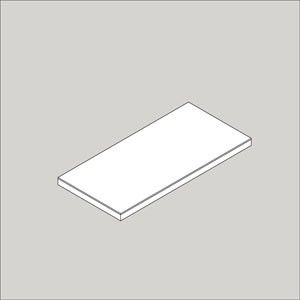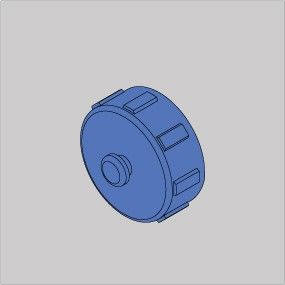Function and purpose
Product page: https://vutlan.com/analog-sensors/91-vt591-leak-sensor.html
Datasheet page: https://vutlan.atlassian.net/l/cp/FxCBogKP
The sensor must be used together with
(recommended) (ordered separately) |
|---|
"WLC / Water leak cable" is ordered separately! When water is in contact with the detection cable sensor indicates the emergence of moisture. The whole area can be effectively monitored by placing the cable near or along with possible flood sources.
Dimensions
Usage examples
Technical specifications
VT591 / Water leak sensor specifications | |
|---|---|
Dimensions | 60×18×18 mm |
Weight | 60 g |
Input | 2 wire (WDC cable) |
Output | RJ11 / RJ12 (6p4c) |
Operating temperature | -10 °C to +80 °C |
Operating humidity | 5% to 95% (Non-Condensing) |
Mounting | Mounting bracket included. |
Power consumption | 60mW |
Max. distance m | 100 m |
HS Code | 9025 80 400 |
Components | Manufactured in E.U. |
Special features | Response time: 15 sec., Recovery time: Depends on how fast the sensor dries out |
WLC / Water leak cable specifications | |
|---|---|
Description | WLC can work in high humidity, pollution, and hazardous waste |
Detectable liquids | Clean, polluted & distilled water; acids; alkalis; alcohols, and other electrically conductive liquid |
Diameter | 5.5 mm in diameter |
Lengths | Order options include 10m, 15m, 25m, 50m, or custom length. |
Weight | 26 g/m |
Operating humidity | 0% - 95 % |
Max. storage temperature | 75°C |
Max. cable length | 225 m |
Inputs | x2 wires |
Package content
Package includes:
Package content | Description | Quantity | |
|---|---|---|---|
1 | WLC3/WLC6/WLC10/WLC16/WLC25/WLC50 leakage cable | 1 pc | |
2 | 4J-S sticky clamps for each 2 m of the rope. | 1 pc | |
3 | Protective cap | 1 pc |
Connecting WLC / Water leak cable
Do not do illustration | Description |
|---|---|
The cable can not touch itself. It needs to be straightened. | |
Do not twist or press down the cable too much. This may lead to deformation. The cable has two sensing wires, these wires can not touch each other. | |
Do not put the cable on a conductive surface. | |
You can cut the cable, but you need to isolate the ends so that they do not touch each other. And do not loop the cable. |
Connect the "VT591 / Water leak sensor" to the monitoring unit. The connection is plug-an-play.
Connect the "VTC / Terminal cable" to the VT591 sensor.
Connect "WLC / Water detection cable" to "VTC / Terminal cable".
Connect any additional "WLC / Water detection cables" to each other as shown in the picture above to make a chain connection.
Wire the WLC rope around or under potentially leaking objects around the perimeter or under the raised floors.
Put a protective cap on the connector of the last WLC cable in a chain.
The sensor is ready to use.
Analog sensor connection
This section includes child pages:
- VT410 / DC voltage monitor
- VT420 / Converter 4-20mA
- VT500 / Temperature sensor
- VT510 / Humidity sensor
- VT501 / Outdoor temperature sensor
- VT520 / AC voltage monitor
- VT520DIN / AC Voltage monitor (link)
- VT530 / Access sensor
- VT540 / Vibration sensor
- VT550 / Wind velocity meter
- VT560 / Smoke detector
- VT570 / PIR sensor
- VT572 / Radar microwave motion sensor
- VT591 / Leak sensor & WLC / Leak detection cable
- VT593 / Spot leak sensor
- VT594 / BMS leak water sensor
- Chain connection of analog sensors
Connecting analog sensors
Connect the analog sensor by a supplied RJ-11 (6P4C) cable to any analog port "A1 .. A8" or "Sensor" port. The determination of the sensor type and connection will occur automatically.
If strong electromagnetic interference is present, we recommend using a 3-pair cable CAN FTP for sensor connection!
6P4C RJ11 cable wiring/pinouts
1- Yellow, 2- Green, 3- Red, 4 - Black
Colors are true for this telephone cable. Both ends match the colors and pinouts (identical).
Please refer to the RJ connectors comparison table:
Daisy chain connection
Some of the analog sensors can be connected to a daisy chain. Please refer to the article "Chain Connection of analog sensors".
Maximum cable length test
ok = tested
x = failed
Model | 50m | 100m | 120m | 150m | 200m | |
|---|---|---|---|---|---|---|
VT407 | AC current converter | ok recommended | ok | |||
VT410 | DC voltage monitor | ok | ||||
VT420 | Converter 4-20mA | ok recommended | ok | |||
VT500 | Temperature sensor | ok | ok | |||
VT501 | Outdoor temperature sensor | ok | ok | |||
VT510 | Humidity sensor | ok | x | |||
VT530 | Access sensor | ok | ||||
VT540 | Vibration sensor | ok | ||||
VT550 | Wind velocity meter | ok | x | |||
VT560 | Smoke detector | ok | ||||
VT570 | PIR sensor | ok | ||||
VT590 | Spot water detector | ok | ||||
VT591 | Water leak sensor | ok |
Extending the number of analog sensors
Using CAN extension "VT408 / Sensor extension unit" it is possible to increase the number of analog sensors connected to the monitoring unit up to 80 sensors.
Additional articles of interest
How to test the sensor & sensor cable
Connect the WLC cable to VT591. Connect VT591 to the analog port of the system. The sensor should appear in the Vutlan Web Interface >> “System tree” panel >> “System group” tab >> “Autodetect” sensors. Make sure that the WLC cable is straight or not contacting itself, or any conducting material. The sensor should appear in the system as “Normal” (if the behavior is set to “Normal”), which means that there’s no presence of liquid (the two yellow wires along the WLC cable are not cables shorted).
Take a rag and wet it a little. Touch the rag to both yellow ires on the WLC cable. This should shorten the contact. The VT591 sensor should change the state to “Alarm”.
Dry the cable carefully with a dry cloth.
Installation examples
Please find installation examples in our articles "Water leakage detection using cable sensor and spot sensor" and "Leak detection under raised floors in data centers".
Cable layouts
Cover the whole area Comprehensive protection for critical areas | |
Cover the edge area Prevent leaks from immersing in or spreading out | |
Covering air-conditioned areas Key protection against major leakage sources such as alr conditioners |
Cable pinouts
The sensor uses a standard Vutlan analog sensor cable(RJ11/RJ12 to RJ11/RJ12) for connecting to the monitoring unit. You can find further instructions at the Analog sensors connection
Technical support
The device does not contain any user-serviceable parts. If the power meter requires service, contact your local sales representative. Do not open the device. Opening the device voids the warranty.
Schematics / Sensitivity adjustment
You can change the R10 resistor using the following schemes.
For example, if your room has very high humidity and the cable is in an alarm state without the spilled liquid being present, you can change R10 to 270k. This should lower the sensitivity level.
Troubleshooting
The following table describes potential problems and their possible causes. It also describes checks you can perform or possible solutions for each. After referring to this table, if you cannot resolve the problem, contact your local Vutlan sales representative for assistance.
Potential Problem | Possible Cause | Possible Solution |
|---|---|---|
The data being displayed is inaccurate or not what you expect. | Incorrect setup values. | Check that You use the correct f(x) formula |
Incorrect voltage inputs. | Check power meter voltage input terminals to verify that adequate voltage is present | |
The power meter is wired improperly. | Check that all wires are connected correctly and that they are energized. See “Wiring Diagrams” of the device. | |
The sensor does not appear in the Vutlan monitoring interface | Communication lines are improperly connected. | Check the 6P4C RJ11 communication cable. |
The communication cable is inserted into the wrong port. | 6P4C RJ11 communication cable must be inserted into the analog port of the Vutlan monitoring system. | |
The sensor is always in alarm state. | The cable touches itself. | The cable can not touch itself. It needs to be straightened. Please check if the cable is bent anywhere. |
The cable is twisted or pressed down too much. | Do not twist or press down the cable too much. This may lead to deformation. The cable has two sensing wires, these wires can not touch each other. | |
The cable is located on a conductive surface. | Do not put the cable on a conductive surface. | |
The cable is damaged | Check the continuity of the cables with a multimeter. Let’s call each wire A and B: If the cable is not damaged, you should get the following results
If the cable is damaged, you will get:
or
|
Copyright:
Vutlan s.r.o. (LLC)
Remote Infrastructure Monitoring and Control
43 ul.Svornosti, 821 06 Bratislava,
Slovak Republic
.png?version=1&modificationDate=1559827911666&cacheVersion=1&api=v2)
.png?version=1&modificationDate=1559827913876&cacheVersion=1&api=v2)











.jpg?version=1&modificationDate=1707204636707&cacheVersion=1&api=v2&width=760&height=433)
%20pinouts%20cable.jpg?version=1&modificationDate=1707204779856&cacheVersion=1&api=v2&width=760&height=431)
.jpg?version=2&modificationDate=1707204813374&cacheVersion=1&api=v2&width=723&height=579)




